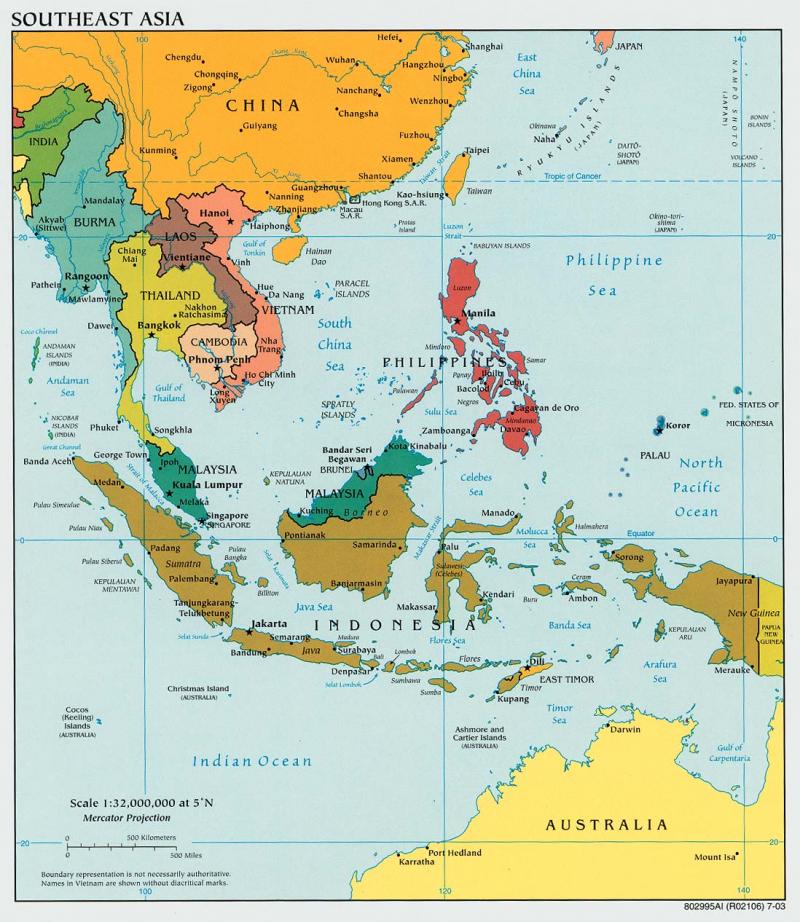Southeast Asia: Political map (2003)
Some Vietnamese Communists today point to early anti-French communist groups that emerged in North Vietnam in the 1930s, but no serious nationalist or communist movements emerged before World War II. The Japanese invaded French Indochina in 1940 and, as everywhere, they claimed the slogan "Asia for Asians." This revolutionary idea took hold throughout Southeast Asia where local people were astounded to find out that their large and populous territories had been controlled by Europeans (with guns) from relatively tiny and distant countries.
In 1941 the Vietminh organization was set up as the League for the Independence of Vietnam. A banished scholar of European Marxist ideas named Ho Chi Minh returned from exile to join the Vietminh and free Vietnam from imperialist European control. The Vietminh quickly seized the north and central regions of Vietnam from postwar Chinese control, while the French re-assumed control only of the south from British forces. The "first Vietnam war" between the French-controlled south and the Communist-led north began in December 1946. In 1954 the French withdrew, leaving Vietnam an indepedent but divided nation.

Public Domain
Public Domain is a copyright term that is often used when talking about copyright for creative works. Under U.S. copyright law, individual items that are in the public domain are items that are no longer protected by copyright law. This means that you do not need to request permission to re-use, re-publish or even change a copy of the item. Items enter the public domain under U.S. copyright law for a number of reasons: the original copyright may have expired; the item was created by the U.S. Federal Government or other governmental entity that views the things it creates as in the public domain; the work was never protected by copyright for some other reason related to how it was produced (for example, it was a speech that wasn't written down or recorded); or the work doesn't have enough originality to make it eligible for copyright protection.